index
Introduction
If you’re looking for an indoor plant that combines exotic beauty with easy care, the Oyster Plant is the perfect choice. With its long, lanceolate leaves and distinctive shade of purple on the underside, this plant, also known as the “Mosaic Plant” or “Purple Wandering Jew,” is a charming addition to any environment. Originally from the tropical regions of Central America, Tradescantia spathacea is appreciated not only for its unique aesthetics, but also for its adaptability to indoor conditions.
Meaning of the Oyster Plant
In addition to its stunning beauty, the Oyster Plant carries symbolic meanings. In some cultures, the plant is associated with luck and protection and is often used in feng shui practices to attract positive energies. The purple hue of the leaves can also symbolize spirituality and mystery. By growing the Oyster Plant, you not only enhance the visual appeal of the environment, but also incorporate a piece of green that carries with it a rich history of cultural meanings and symbolism.
| Common Name | Oyster Plant |
|---|---|
| Botanical Name | Tradescantia spathacea |
| Family | Commelinaceae |
| Plant Type | Indoor plant |
| Size Adult | Medium |
| Sun Exposure | Indirect Light to Partial Shade |
| Soil Type | Well-drained, Rich in Organic Matter |
| soil pH | Neutral to Slightly Acidic |
| Flowering Season | Spring to Summer |
| Flower Color | Insignificant Flowers |
| Native Area | Central America |
| Toxicity | Slightly Toxic (Caution with pets) |
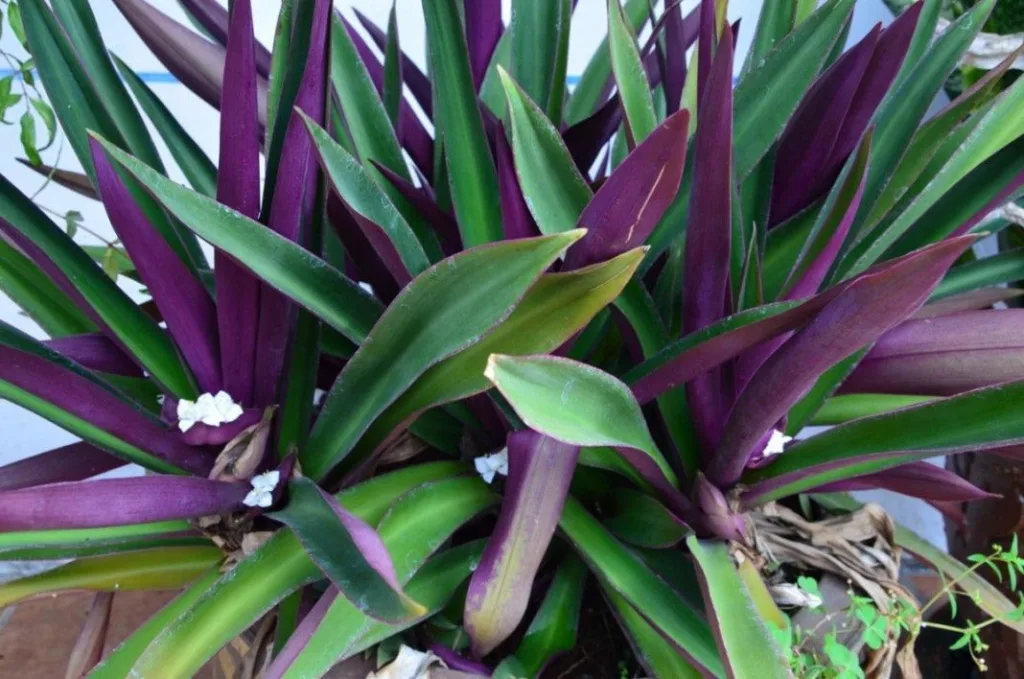
How to Care for the Oyster Plant
Adequate light
To ensure the lush flowering of the Oyster Plant, light plays a crucial role. Place the plant in a spot that receives indirect light to partial shade. Avoid direct exposure to intense sunlight, as this can damage the sensitive leaves.
Well-prepared soil
The right soil is essential for healthy development. Opt for well-drained soil enriched with organic matter. Make sure the container has drainage holes to prevent excessive water accumulation, which can lead to root rot.
Conscientious watering
Keep the soil slightly moist, watering when the top layer is dry to the touch. Avoid waterlogging, as the Oyster Plant is susceptible to root problems in constantly moist soil.
Controlled temperature and humidity
Oyster Plant thrives in moderate tropical conditions. Keep the ambient temperature around 18-24°C and avoid exposure to cold drafts. Moderate humidity is ideal; if the air is too dry, consider using a humidifier.
Strategic fertilization
Fertilize the plant during the growing season, from spring to summer, with a diluted balanced fertilizer. Avoid excesses, as the Oyster Plant is sensitive to the accumulation of salts in the soil.
By following these care guidelines, you will ensure an environment conducive to the Oyster Plant thriving, showing off its distinctive purple leaves and adding a tropical and elegant touch to your indoor space.
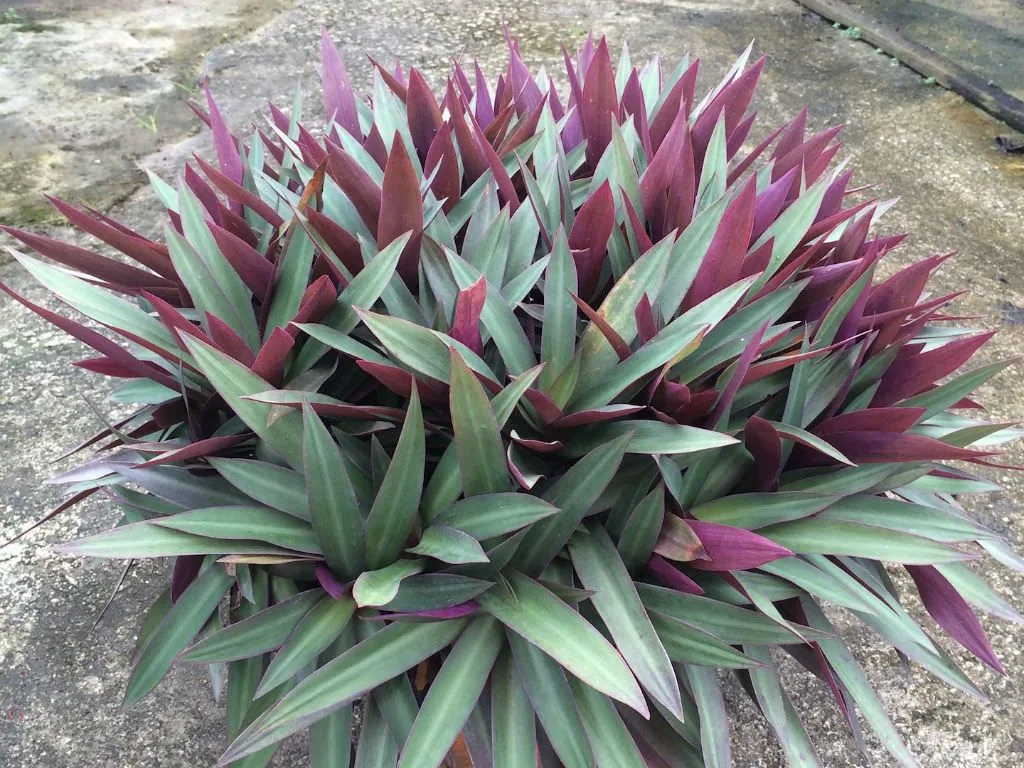
How to Make Oyster Plant Cuttings
Choosing cuttings
When propagating the Oyster Plant, choose healthy cuttings that are at least 10-15 centimeters long. Choose to cut below a node to promote the development of healthy roots. Make sure to select vigorous cuttings to ensure successful propagation.
Preparing the cuttings and soil
Carefully remove the lower leaves from the cutting, leaving a few at the tip. Plant the cuttings in a light rooting medium, such as perlite or a mixture of vermiculite and potting soil. Keep the medium slightly moist during the rooting process.
Environment conducive to rooting
Place the cuttings in a location with indirect light, providing ideal conditions for rooting. An environment with a stable, moderate temperature will favor root development. If desired, the use of a greenhouse or transparent plastic bag can create a favorable microclimate.
Careful transplanting
When the cuttings have developed adequate roots (usually after a few weeks), they are ready for transplanting. Transplant each cutting into individual containers with well-balanced potting soil. Continue to provide similar care to adult plants.
How to Plant Oyster Plant
Site Selection and Soil Preparation
When planting Oyster Plant, choose a spot with indirect light to partial shade. Prepare well-drained soil enriched with organic matter. Make sure the container has good drainage to prevent water accumulation.
Careful planting
Dig holes in the soil and plant the seedlings, keeping the recommended distance between them. Make sure you cover the roots properly with soil. Press gently to firm the seedlings. Water the newly planted plants and keep monitoring to ensure a healthy establishment.
By following these careful propagation and planting steps, you’ll be well on your way to multiplying the beauty of the Oyster Plant in your garden or indoor space.
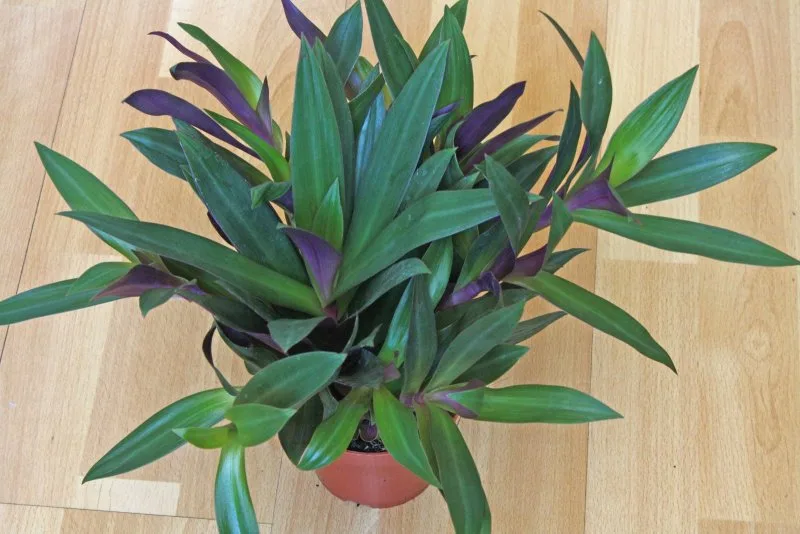
Most common pests and diseases
When growing the Oyster Plant, it is essential to be aware of the pests and diseases that can affect this tropical plant. Here is a list of the most common:
- Mites: Small arachnids that can cause damage to the leaves, resulting in spots and discoloration.
- Mealybugs: Small, sucking insects that feed on the plant’s sap, leaving behind a sticky substance called honeydew.
- Aphids: Small insects that feed on the sap, causing leaf deformities and transmitting viruses.
- Powdery mildew: A fungus that appears as a white or grayish substance on the leaves, impairing photosynthesis.
- Root rot: Caused by excess humidity, resulting in root rot and yellowing of the leaves.
Common problems and their solutions
When you spot signs of trouble with your Oyster Plant, it’s crucial to act promptly. Here are some common issues and their solutions:
Yellowing leaves
Cause: This may indicate overwatering or a lack of nutrients. Solution: Adjust watering, avoiding waterlogging. Fertilize the plant with a balanced fertilizer.
Leaf spots
Cause: Usually caused by spider mites or fungi. Solution: Remove affected leaves, apply natural pesticides or fungicides as necessary.
Sudden wilting
Cause: Can be the result of a lack of water or compromised roots. Solution: Water properly and check the condition of the roots. If necessary, replant in well-drained soil.
Insects
Cause: Infestation by mealybugs, aphids or other insects. Solution: Use natural insecticides, such as Neem soap, or remove the insects manually with a jet of water.
Powdery mildew on the leaves
Cause: Damp conditions and lack of air circulation. Solution: Remove the affected parts, improve ventilation and avoid wetting the leaves during watering.
By being aware of these signs and taking quick and effective action, you can keep your Oyster Plant healthy and resistant to common pests and diseases. Prevention and proactive action are key to ensuring the continued flourishing of this beautiful tropical plant.
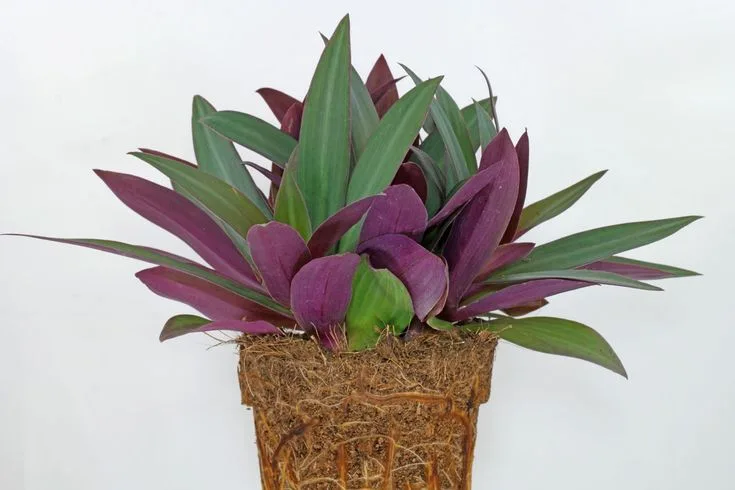
Curiosities and myths
Exploring the universe of the Oyster Plant goes beyond the aesthetic appreciation of its vibrant leaves. Let’s uncover some intriguing curiosities and captivating myths related to this fascinating plant.
Exotic origins and curious names
Despite being native to the tropical regions of Central America, the Oyster Plant has acquired several curious names around the world. Known as the “Mosaic Plant” or “Purple Wandering Jew,” these names reflect the diversity of its leaves, which have mosaic patterns and a distinctive purple hue.
Cultural Significance and Positive Energies
In some cultures, the Oyster Plant is considered more than just a decorative plant. Associated with luck and protection, it is believed that growing this plant can attract positive energies into the home. Its purple leaves also have symbolic connotations, being related to spirituality and mystery.
Myths about resistance and superstition
Popular legends attribute to the Oyster Plant a quality of extraordinary resistance, symbolizing the ability to overcome adversity. In addition, in some superstitious traditions, the presence of this plant is seen as a shield against negative influences, adding a mystical layer to its beauty.
Surprising Varieties and Colors
Although it is known for its distinctive purple leaves, the Oyster Plant comes in a surprising variety of colors in different cultivars. From more intense shades of purple to variations of green, these different palettes make each plant unique and expressive.
By incorporating these curiosities and myths into your knowledge of the Oyster Plant, the experience of growing and enjoying this plant becomes even more enriching. The beauty goes beyond the visual, embracing a cultural and symbolic narrative that adds depth to your garden or interior space.
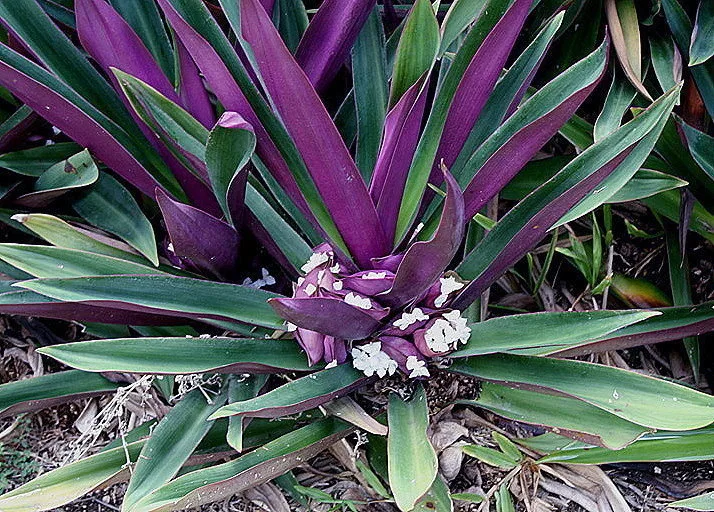
Conclusion
In summary, the Oyster Plant reveals itself not only as a charming indoor plant, but as a vibrant piece loaded with cultural and symbolic meanings. Throughout this guide, we have explored everything from essential care, such as adequate light and well-drained soil, to fascinating curiosities, inspiring myths and the challenges faced by this tropical plant. Its botanical name, Tradescantia spathacea, not only echoes its elegance, but also highlights its unique and adaptable nature.
In addition to practical considerations, the Oyster Plant carries with it a rich cultural tradition, being associated with luck and protection in various cultures. Its purple hue, as well as adorning our environments, carries with it symbolisms of spirituality and mystery. By cultivating the Oyster Plant, we immerse ourselves not only in gardening, but in an experience that transcends the boundaries of aesthetics, offering a true encounter with nature and its narratives.
Frequently Asked Questions
How big is the Oyster Plant plant?
The Oyster Plant (Tradescantia spathacea) usually reaches a medium size, with its elegant lanceolate leaves growing to a height of around 30 to 40 centimeters. This compact plant is ideal for indoors, remaining manageable while showing off its exotic beauty.
What is the Oyster Plant plant used for?
In addition to its ornamental function, the Oyster Plant is cultivated for its symbolic and cultural significance. In some traditions, the plant is seen as a talisman of luck and protection and is used to attract positive energies into the environment. Its unique beauty and the variety of purple tones make it a popular choice for decorating indoor spaces, adding a tropical and elegant touch.
How to care for the Oyster Plant plant?
Caring for the Oyster Plant involves providing the ideal conditions for its healthy development. Place the plant in indirect light to partial shade, in well-drained soil enriched with organic matter. Keep watering moderate, avoiding waterlogging, and fertilize during the growing season. Also, keep an eye out for possible pests and diseases, taking preventative and corrective measures as necessary. By following these guidelines, you will ensure an environment conducive to the Oyster Plant showing off its beauty and prosperity.







